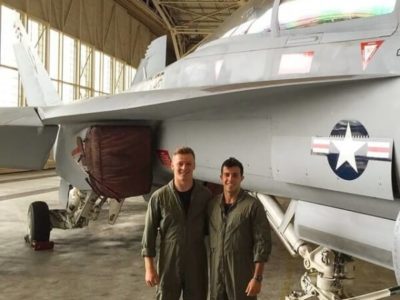The men and women of the United States Naval Academy are not only masters of the sea. If you’re interested in aerospace engineering, the Naval Academy is the best place to go. Once midshipmen graduate as officers, they will have in their arsenal the basis for design, construction and performance of aircraft and spacecraft. Graduates from the naval academy can choose any service assignment they please, but most aerospace engineering majors go to flight school in Pensacola, Florida.
Aero engineering at the Academy is intense and challenging–definitely not for any average airhead (pun intended). But if you want to serve this amazing country and are willing to work for the best education in aero engineering, you are a perfect candidate to take on this challenging and rewarding major.
What you’ll be doing
The major has two tracks, aeronautical engineering and astronautical engineering. Aeronautical engineering pertains to flying craft within the Earth’s atmosphere, astronautical engineering refers to flying and operating outside of earth’s atmosphere as well as maneuvering the launch vehicles that get them into space. If working with rockets isn’t the coolest thing ever, then I don’t know what is.
Midshipmen in this major will be introduced to both tracks before they choose one. The mids will also take classes that cover a broad range of engineering fundamentals such as aerodynamics, orbital science, space environment, propulsion, structural design, stability and control, vehicle design and systems integration. Midshipmen will also be able to do insanely cool things. (Prime example: that video above.)
Upsides

1. “I am in flight school right now, so knowing the physical characteristics of how planes and engines perform was really helpful. You go into flight school with a better understanding than most people who don’t go to the Naval Academy for Aerospace Engineering.” — Michael Ryan, United States Naval Academy, Class of 2015
2. “You get to do all kinds of cool stuff at the academy, especially in lab. You can make anything you want in lab, you get a lot of freedom with what you can and can’t make. You can let your imagination run wild in lab and you have access to some of the coolest and most high-tech technology in the country.” — Brian Kennedy, United States Naval Academy, Class of 2017
3. “I was able to take free reign my final year and took my favorite class, Vertical Short Take-Off Landing (VSTOL). That class dealt with helicopters and how they operate; all the black magic that goes along with helicopters. It was really interesting.” — Chris Morneau, United States Naval Academy, Class of 2015
Downsides

1. “Lab reports were my enemy; I probably wrote more in my lab reports than any English major in their entire writing career. I wish someone would have warned me about the writing. Also, beware of the gas dynamics course. There’s nothing worse than trying to mathematically model how an air molecule moves around–it was definitely my least favorite class.” —Michael Ryan, USNA, Class of 2015
2. “Aerospace engineering is lot more work and less sleep than other majors, seeing as it is the most challenging major offered. But I don’t think I would have picked a different major if I could go back. The work is more manageable when you know it will all be worth it.” –Brian Kennedy, USNA, Class of 2017
3. “Fluid and Gas dynamics is terrible. It’s an extremely important course but you’ll spend a lot of hours working on things for it. It’s very challenging; you really have to focus and drive.” –Chris Morneau, USNA, Class of 2015
Career Opportunities

The career options available to Naval Academy graduates are the broadest offered by any of the nation’s service academies. Naval Academy graduates will have more responsibility and challenge on the job than almost any civilian just out of college. Many recent graduates are leaders of sailors and Marines throughout the world.
At the naval academy, midshipmen can pick any major and service assignment they want. Essentially, a history major can end up as a leader on a nuclear powered Navy submarine. The opportunities for careers in the Navy/Marines and after are endless. Here are the top 5 service assignments and careers aerospace engineers pursue:
1. Naval/Marine Aviation
Um, how cool is landing airplanes on an aircraft carrier in the middle of the ocean? Or flying helicopters and cargo planes? That could be you one day. You better make sure you have pretty stellar aim, though. Those aircraft carriers aren’t all that big.
2. Nuclear Power
If you always loved making those little bottle rockets as a kid, or if you were the one who just had to make the baking soda volcano during science class, this is the job for you. It’s just like that, but so much bigger. Think of the power at your fingertips…
3. Submarine Force
Similarly, if you were the kid who always liked to play submarine–or if you just really love the sandwich–this might be your place. It might not seem to much like “aero,” or “space,” but all that physics you learned still applies in the deep blue sea.
4. Boeing and Lockheed Martin
Who said you had to stick to government jobs forever? Of course, working with these engineering companies won’t ever take you too far away from your naval academy roots, but you’ll definitely be able to explore engineering opportunities beyond the Marine Corps and Navy.
5. NASA and other government agencies
NASA is within your grasp with an Aerospace Engineering degree under your belt. Whenever people make that overused joke about something “not being rocket science,” you get to smile a smug little smirk and then tell them what real rocket science is like. Not to mention, you could totally help send humans to another planet. Now that’s pretty cool.



















